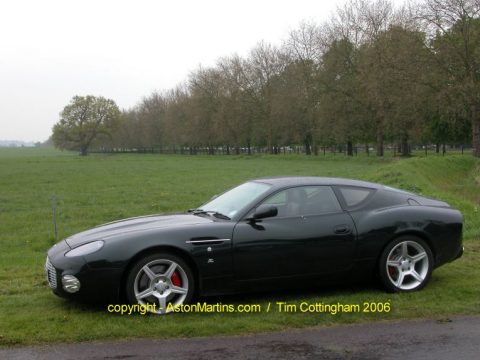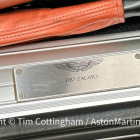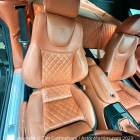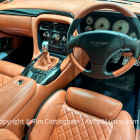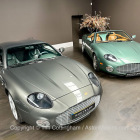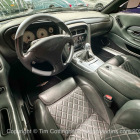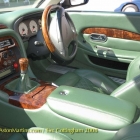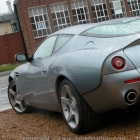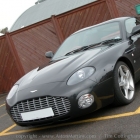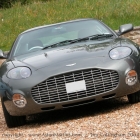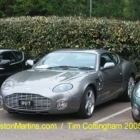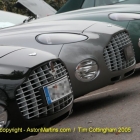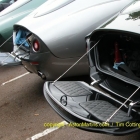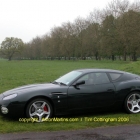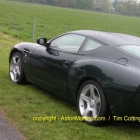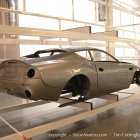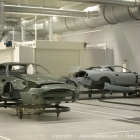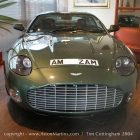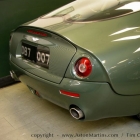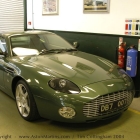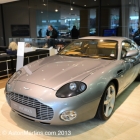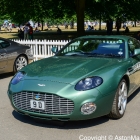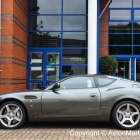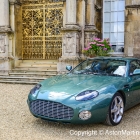The engine is a modified version of the familiar 5.9 litre V12 with a new exhaust system to produce an output of around 435 bhp. The modified DB7 Vantage Volante chassis was built in the UK, then shipped out to Milan for Zagato to hand fit the body panels, mostly of aluminium. So, thankfully, even in 2003, Aston Martin were still offering a ‘coachbuilt’ car in the best traditions of Newport Pagnell. With the reduction in length, the rear seats were deleted and the boot was rather small too – the Zagato is strictly a two seater. The DB7 Zagato was the first Aston Martin to use Aniline leather as standard in place of the more durable pigmented leather.
Distinguishing features on the Zagato car include a new deeper variation on the classic AM grille design; the rear also mimicking the grille shape and a wonderfully shaped rear screen which my daughter christened ‘the sunglasses’. Whilst both the headlights and front lights are straight from the standard car, the rear lights are pure Italian. Of course, the trademark Zagato ‘double bubble’ roof is a strong feature. The boot panel is an unusual drop down type.
All 99 production cars found happy owners, and a 100th car, a pre-production example was retained by the factory and can occasionally be seen at the Gaydon factory, BMHT museum also at Gaydon or the with the AMHT collection at the Barn
Below, are some very rare photographs were taken at the new AM Gaydon facility during the 2003 AMOC open day. Although the DB7 Zagato was supposed to be being built at the nearby Bloxham factory, these completed bodyshells were photographed both in the new class leading paint shop and in the storage facility prior to being taken to Bloxham for assembly.
The above DB7 Zagato, chassis 100, was retained by Aston Martin and is cared for by the Aston Martin Heritage Trust at their museum in Oxfordshire.

All rights to supply parts for the DB7 Zagato are now held by the Dutch Aston Martin Heritage specialist, Noble House.



